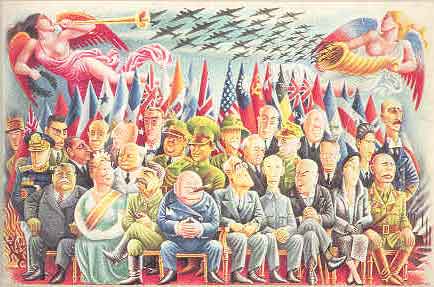CONCLUSION

In looking back at the Cold War the Four
pillars of American Foreign policy, Deterrence, Containment,
Commitment to intervention and establishment and maintenance
of the international economic system, as used in practice,
often eroded before their subsequent policy inspirations were
dismantled. That is to say that these four pillars became
obsolete in that they were never really pillars rather ideological
constructs that represented traditional East- West
confrontations, superimposed along a North South Axis
of economic integration, laying the foundations for globalization.
These historical processes of confrontation
had long historical precedents in the historical global political
economy that has been a part of history since the invasions
of the Muslim hordes and the Khan's. This traditional ideology
maintained a system of bipolar opposition and it consummated
in the 20th century via the effect and dissolution of colonialism
at which point these 1st and 2nd world superpowers competed
for control of regional economic blocs via political and economic
ideologies that centered on the notion of core and peripheral
states. After relatively consolidating power in the
W. European bloc American foreign policy leaders turned to
the Third World in which various tests of resolve, often at
the behest of corporate investment, were undertaken during
various hotspots during the Cold War.
It was through this vigorous application of
Foreign policy, Foreign Intervention and management of the
liberal international economic system that enabled US president's
to acquire a great deal of power and yet a legacy of debt
and trade imbalances. The Four pillars were in part to do
with managing the geopolitical and economic system and yet
they were also quasi theological tenants in how President's
could build consensus in Congress and rubberstamp programs,
an ideology of necessity that committed Americans and the
World to a State of Clear and present Danger.
The END
|